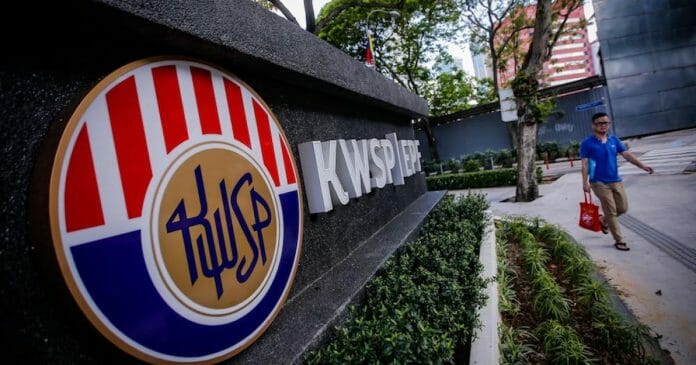The Employees Provident Fund board announced a dividend rate of 5.35% for Simpanan Konvensional, with a total payout of RM45.44 billion; and 4.75% for Simpanan Shariah, with a total payout of RM5.70 billion, bringing a total payout amount for 2022 to RM51.14 billion.
As of 31 December 2022, the EPF recorded a lower total gross investment income of RM55.33 billion, compared to RM68.89 billion in 2021, it said this was driven by high market volatility and lower valuations across equity and fixed-income markets.
EPF Chairman Tan Sri Ahmad Badri Mohd Zahir said, “despite the persistent global market downturn in 2022, the EPF investment portfolio maintained its resilience and responded with minimal impact. This was largely due to our overarching strategy that emphasises long term sustainability of investments and returns, in line with the EPF’s Strategic Asset Allocation (SAA).
So how did the provident fund remain resilient during such an unpredictable climate where even investment banks struggled to return similar yields?
The financial year 2022 was marked by both slower global growth and high inflation rates, compounded by the tightening of monetary policies by major central banks to reel in inflationary pressure. Fixed income markets did not fare well as bond indices posted negative returns for the year, largely attributed to elevated yields following continued US Federal Reserve rate hikes. Geopolitical instability was also a major factor in driving market gyrations, with the Russian invasion of Ukraine causing a major dislocation in commodity prices, compounded by sabre rattling between the US and China.
The year also saw major global equity benchmark indices wrapping up their worst annual performance since 2008, falling between 20% to over 30% during the year. On the domestic front, the FBM KLCI closed the year 5% lower year-on-year at around the 1,495-point level. The bearish market performance had weighed on the EPF’s earnings generation from equities, which continued to be the EPF’s main income contributor.
Tan Sri Ahmad Badri said notwithstanding the weak performance of the equity markets, not all sectors were affected as some, such as energy, plantation, financial services, and consumer staples, fared reasonably well compared to other sectors. The EPF’s diversification strategy across different sectors and geographies has been effective in capitalising on profit opportunities and generating returns.
The EPF’s SAA, paired with robust liquidity and risk management measures, provides a framework that guides and cushions the fund against difficult conditions, allowing it to deliver the results for 2022.
The institution’s success in delivering stable and commendable dividends, which consistently surpass that of other domestic funds, has been instrumental in solidifying its reputation as one of the country’s top institutional investors. This has also contributed to members’ savings, ultimately translating into greater financial security for members’ retirement years.
“Our commitment to building our members’ savings has been the driving force behind our continued success, and we remain steadfast in our dedication to delivering superior dividends and securing our members’ financial futures,” said Tan Sri Ahmad Badri.
EPF’s investment portfolio in 2022
For 2022, the EPF recorded a gross investment income of RM55.33 billion, with RM6.83 billion allocated to Simpanan Shariah. The Equities asset class contributed RM30.54 billion, or 55% of the EPF’s total gross income, lower compared to the RM41.06 billion recorded in 2021. Foreign listed equities, which yielded a return on investment (ROI) of 9.27%, continued to be the driver of returns for this asset class.
The private equity portfolio also demonstrated strong performance, recording an ROI of 13.65%. This portfolio generated lower gross investment income compared to 2021, largely due to lower valuations of the underlying assets, apart from lower distributions received for the year.
EPF took the prudent measure of writing down RM3.43 billion of its listed equity portfolio in 2022, which was higher than the RM1.15 billion write down recorded in 2021, in line with the volatility in the equity markets. A total of 74% of the total amount came from Shariah-compliant counters that underperformed, which in turn impacted the EPF’s Simpanan Shariah performance for the year.
With almost half of the EPF’s total asset allocation in Fixed Income instruments, comprising Malaysian Government Securities and Equivalent, as well as Loans and Bonds, the retirement fund was able to maintain steady returns. Income from the portfolio contributed RM18.19 billion, or 33% of the EPF’s total gross income. The lower income recorded compared to 2021 can be attributed to lower capital gains driven by increasing yields.
The Real Estate and Infrastructure portfolio’s income of RM5.56 billion continued to play a role as a hedge against inflation, recording an ROI of 10.50%, a spread of 6.13% above the ROI for Fixed Income instruments of 4.37%; whereas income from Money Market instruments came in at RM1.04 billion with an ROI of 3.48%. The performance of these two asset classes is in line with the return expectations set by the SAA.
Despite the numerous macroeconomic challenges and the pandemic-related withdrawals totalling RM145 billion, the EPF’s investment assets remained intact and closed at RM1,003 billion in December 2022. The fund manager said managing the withdrawals was a difficult challenge for the fund, given the need to ensure sufficient liquidity. Even as it successfully navigated through the situation, the cash outflow limited EPFs ability to take advantage of investment and profit opportunities for the benefit of all members.
By broad asset class, Fixed Income instruments made up 47% of investment assets, while Equities comprised 42%. Real Estate and Infrastructure as well as Money Market instruments made up 7% and 4% of EPF assets, respectively.
The EPF’s diversification into foreign assets and currencies allowed it to realise additional gains with profits from non-Ringgit sources and added value to the retirement fund’s overall return. As of December 2022, foreign investment made up about 36% of the EPF’s investment assets and contributed 45% of the EPF’s total gross investment income.









